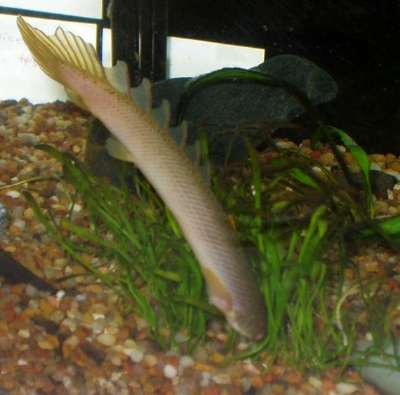Knowledge of the structure–property–function relationships of dermal scales of armoured fish could enable pathways to improved bioinspired human body armor, and may provide clues to the evolutionary origins of mineralized tissues.
Writing in Nature Materials, researchers Benjamin J. F. Bruet, Juha Song, Mary C. Boyce and Christine Ortiz present a multiscale experimental and computational approach that reveals the materials design principles present within individual ganoid scales from the 'living fossil' Polypterus senegalus.
This fish belongs to the ancient family Polypteridae, which first appeared 96 million years ago during the Cretaceous period and still retains many of their characteristics.

The 16-inch predatory eel has multiple layers of scales, each one hundredth the width of a human hair, that both protect the organs and serve to dissipate the attack to surrounding sections of the scales.
It appears to be, quite literally, living scale mail.
The mechanistic origins of penetration resistance (approximating a biting attack) were investigated and found to include the juxtaposition of multiple distinct reinforcing composite layers that each undergo their own unique deformation mechanisms.
A unique spatial functional form of mechanical properties with regions of differing levels of gradation within and between material layers, and layers with an undetectable gradation, load-dependent effective material properties, circumferential surface cracking, orthogonal microcracking in laminated sublayers and geometrically corrugated junctions between layers.
Article: 'Materials design principles of ancient fish armour', Benjamin J. F. Bruet, Juha Song, Mary C. Boyce & Christine Ortiz, Nature Materials Published online: 27 July 2008 doi:10.1038/nmat2231




Comments